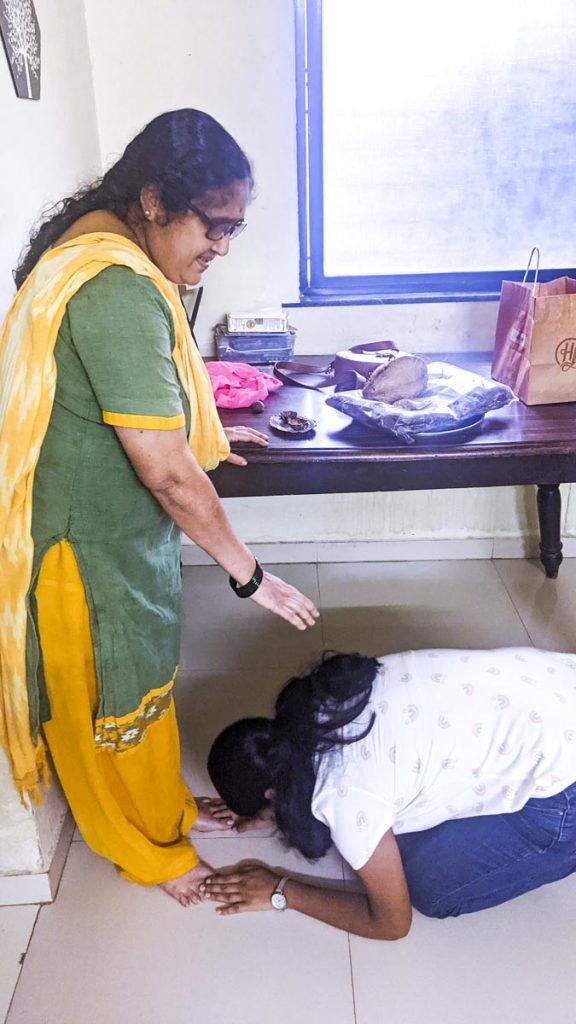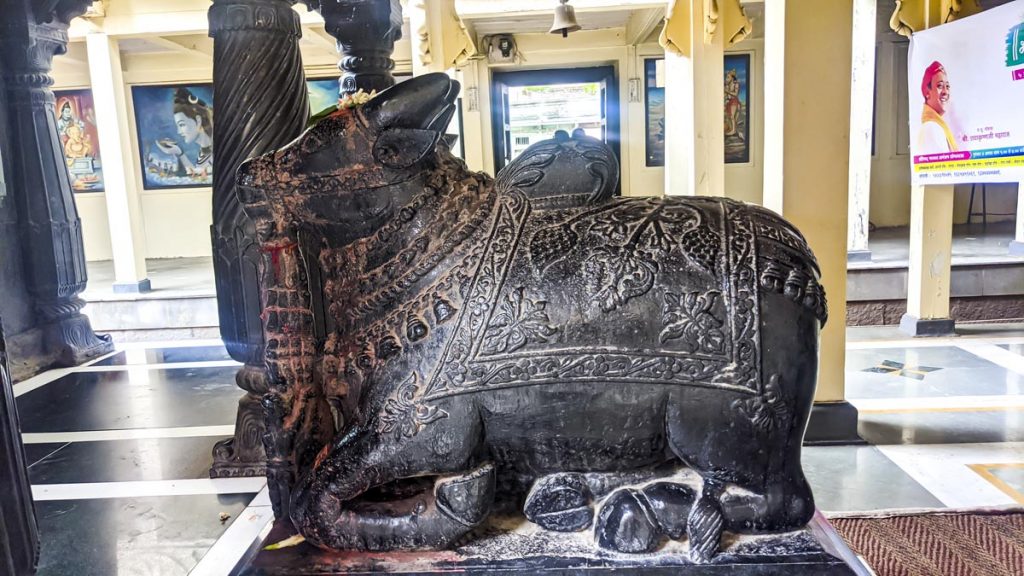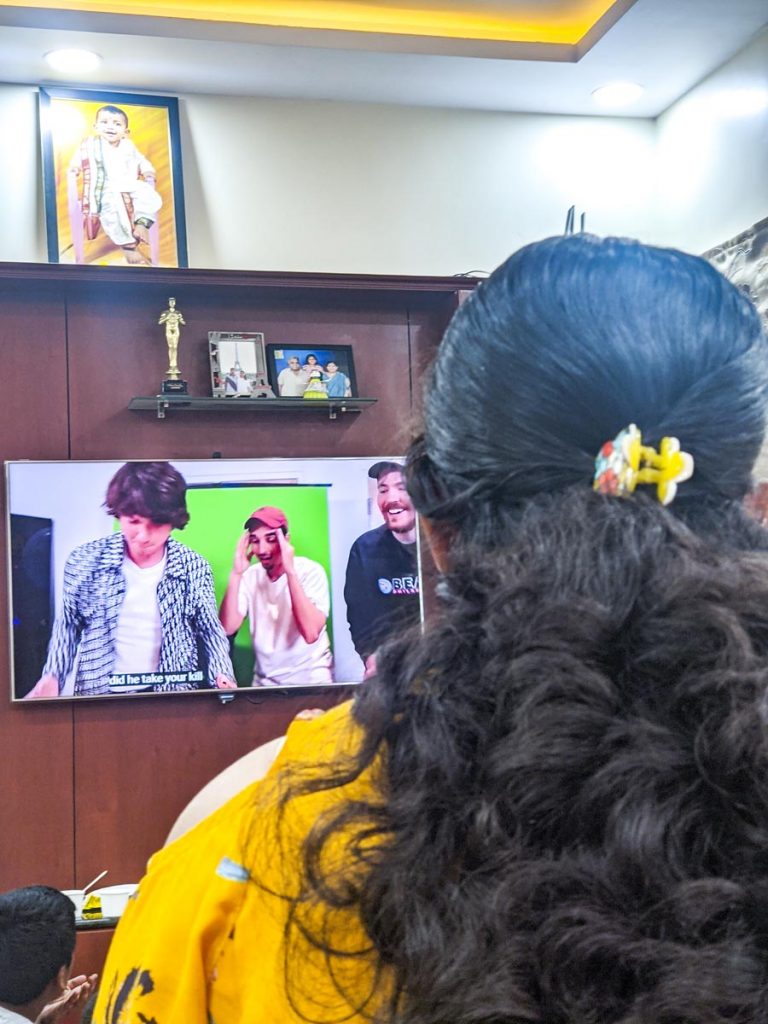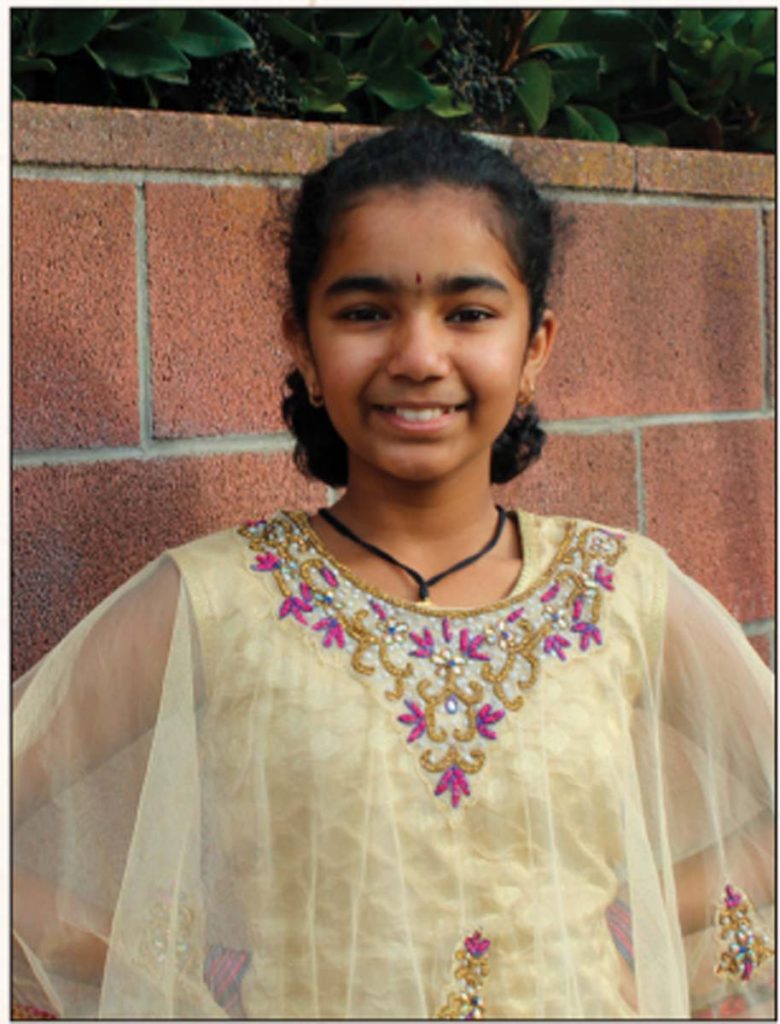Two teenage Indian-American friends who spent this summer in India reflect on how Hinduism lives and breathes in each country
By Mugdha Shinde and Sanjeevani Dedge, California
This summer, through june and July, each of our families had a separate fun trip to India to visit with relatives and friends. We stayed in the cities of Pune and Nashik in Maharashtra, and Bengaluru among others. Though on two completely separate continents, separated by several oceans, we noticed a lot of similarities—and some differences—in the presence of Hinduism in the US and India. We examined and compared the temples, festivals and customs in both countries.
Mugdha on Temple Experiences
When I visited India, there was a temple around every corner. Even the home shrines were much more elaborate than those in the US. Sometimes, an entire room was dedicated for worship in the home.
Temples in India varied greatly in size. While some were simple structures with four walls and a roof, others were grand buildings, with elaborate carvings. Sometimes they even had large properties, allowing for huge open areas. A common feature in all the temples I saw was that they could easily be recognized due to the saffron flag waving above them. In the US, I have noticed most temples are in generic warehouse-style buildings that cannot be recognized as a temple at first sight. This could be due to the high costs of building grand temples in the US, or simply due to the convenience of renting a pre-built building.

Another observation about temples in the US is that they have murtis of multiple Deities. For example, the Sunnyvale, California, Hindu Temple has murtis of Ganesha, Lord Rama, Saraswati, Lakshmi and even Dhanvantari, the God of Ayurveda. This might be due to the fact that there aren’t as many temples in the US, so all Deities are worshiped in one temple. Another reason could be that people from all over India visit temples in the US, so all the Gods that people across India worship must be there.
On the other hand, most temples in India are dedicated to one Deity. If there are multiple Deities worshiped in a temple, there is one that is the “main’’ Deity. For example, a temple dedicated to Lord Rama might also have murtis of Sita, Lakshman and Hanuman.
The final difference I noticed was that in India, the temples are more of a place to socialize, with some people even visiting them daily. In contrast, not as many people go to the temple every day in the US. Rather, visiting the temple is more of a “special event” that usually takes place during festivals.
Sanjeevani on Festival Celebrations
I stayed in India for two months and that was more than enough time for me to be around for a few festivals. In India, I noticed that the festivals are celebrated as a whole community, very unlike how they are celebrated in the US.

Here, Hindu festivals are celebrated by families alone, or sometimes by groups of families who come together and celebrate. But in India, everyone celebrates! Schools will give holiday breaks or they will change the school rules for the festival. For instance, during Naga Panchami (a festival where snakes are worshiped with milk, sweets and flowers) my cousin’s private school allowed the students to put on mehendi, something that they cannot do normally in the year. And when I went to the mall, there were clothing items on discount for Naga Panchami; you can see the reflections of the festival everywhere you go!
In India, celebrating the festival feels much more real, and authentic. For example, during Vat Pournima (a festival where married women worship a banyan tree) in the US, my mom usually just takes a normal tree and considers it as a banyan for the puja, since there aren’t that many banyan trees in the US. When I visited my cousins in Connecticut, they lived in a really, really crowded city without any big trees around, so they printed a picture, put it up on the wall, and used that. But in India, everyone went to these big banyan trees that are in the area, and to me, it felt really good seeing the puja being done to a real banyan tree. What’s more is that there were so many other ladies who had also come there, doing the puja alongside my mom. And the festival felt more “real” once I could see that so many other people were celebrating it with us.
Mugdha on Guest Protocols
In India and the US, I noticed the customs related to being a guest and hosting guests are very different. For starters, people in the US almost always call ahead before they visit anyone’s house. However, in India, the visits were less planned out. In fact, several times during our trip my family would be in an area and just visit everybody that lived close by that day. There was no planning ahead of time who we were visiting and when; we just called around ten minutes before to check that they were at home. At one point we visited my grandfather’s house without calling at all, as the phone reception was bad there.
Because visits in the US are almost always planned a few days in advance, there is usually a reason for them. Most of the time, people don’t just drop by to say hello, as is the case in India. Even if the reason is that the two people haven’t seen each other in a long time, it is still planned. The conversations during visits are more structured in the US as well, as these discussions generally relate to specific reasons for the visit. However in India, conversation can be about anything, from the weather to the most recent political activity.
An additional thing I noticed in India was that guests were always offered water when they arrived. In the US, as well, my family follows this tradition, but not all people do. In Hindu scriptures and shlokas, it is said “atithi devo bhava,” which means that your guest is like God. Thus, you should treat them with respect and hospitality. When we meet someone elderly, my brother and I—and sometimes my parents—bend down to touch their feet and receive their blessings. This is another example of treating your guests, especially older guests, with respect in India.
Mugdha & Sanjeevani on Media
It is very clear that the amount of religious exposure a child gets will reflect on how religious they are when they grow up. And no matter how much parents enforce learning about their religion at home, the exposure children get outside, for example at school, or through media, will affect them. In the US, most of the popular celebrities and music artists are Caucasian, some Black or Hispanic. Not only celebrities, but most TV shows and beauty standards are based on European standards. This may not seem like it has a lot to do with religion, but I have seen that many Indian teens tie their culture with their religion—they try to push them away. Many Indians I know have tried to hide their religion and not talk about their culture to fit into these standards.

And the media isn’t the only place that children get negative impressions about their religion; it can also be at school. In many US schools, Hinduism is taught in a bad light compared to other religions. It is ridiculed, and students are given a lot of misinformation. This makes teens further think that they need to push their religion away. My own friends joke about this sometimes, about how they sometimes feel embarrassed to show up to the Hindu club at school. This is completely different in India. There you don’t feel like the odd one out, because culture and religion are part of the mainstream life, and culture gets emphasized not only through media, but also through food, festivals and day-to-day practices.The need to fit in isn’t really there, because everyone else is just like you.
There is, however, a lot of Western culture seeping into India. Some schools, especially English-medium schools, give more holidays for Christmas than for Diwali. You can find many young people in India, including a few of my friends, obsessed with Western trends and entertainment. K-pop has become quite popular, as have songs by Western artists. Several Indians of the young generation now listen to artists such as Taylor Swift, Ed Sheeran and Ava Max, not listening nearly enough to Indian artists from their own country. When I visited India this summer, I was really surprised that my cousins knew a lot more about K-pop and Western music artists than I did. This is yet another example of India being Westernized.
Our Joint Conclusion
Slowly these two countries are coming together, intermixing the cultures and traditions. While this is a good thing in that the US is being exposed to Hindu culture, it is not so good that some of India’s culture is getting pushed aside by Western pop trends, especially among the youngest generation. However, we are somewhat optimistic. In both countries, efforts are being made to preserve, renovate and build Hindu temples. Our festivals are being recognized in the US. And even though certain customs–such as visits to friends and relatives–are different in the US, the meaning and intentions behind them are the same. For us, it is important to slowly unite our traditional Hindu culture with the best of Western ideals in a way that makes for a stronger future.
AUTHORS


